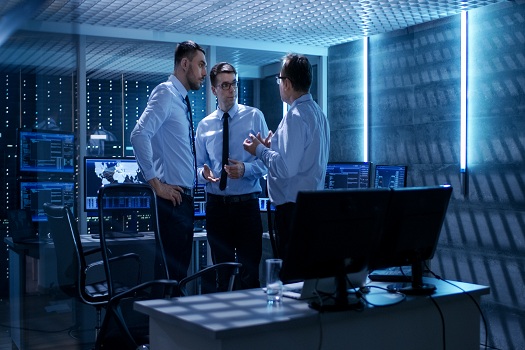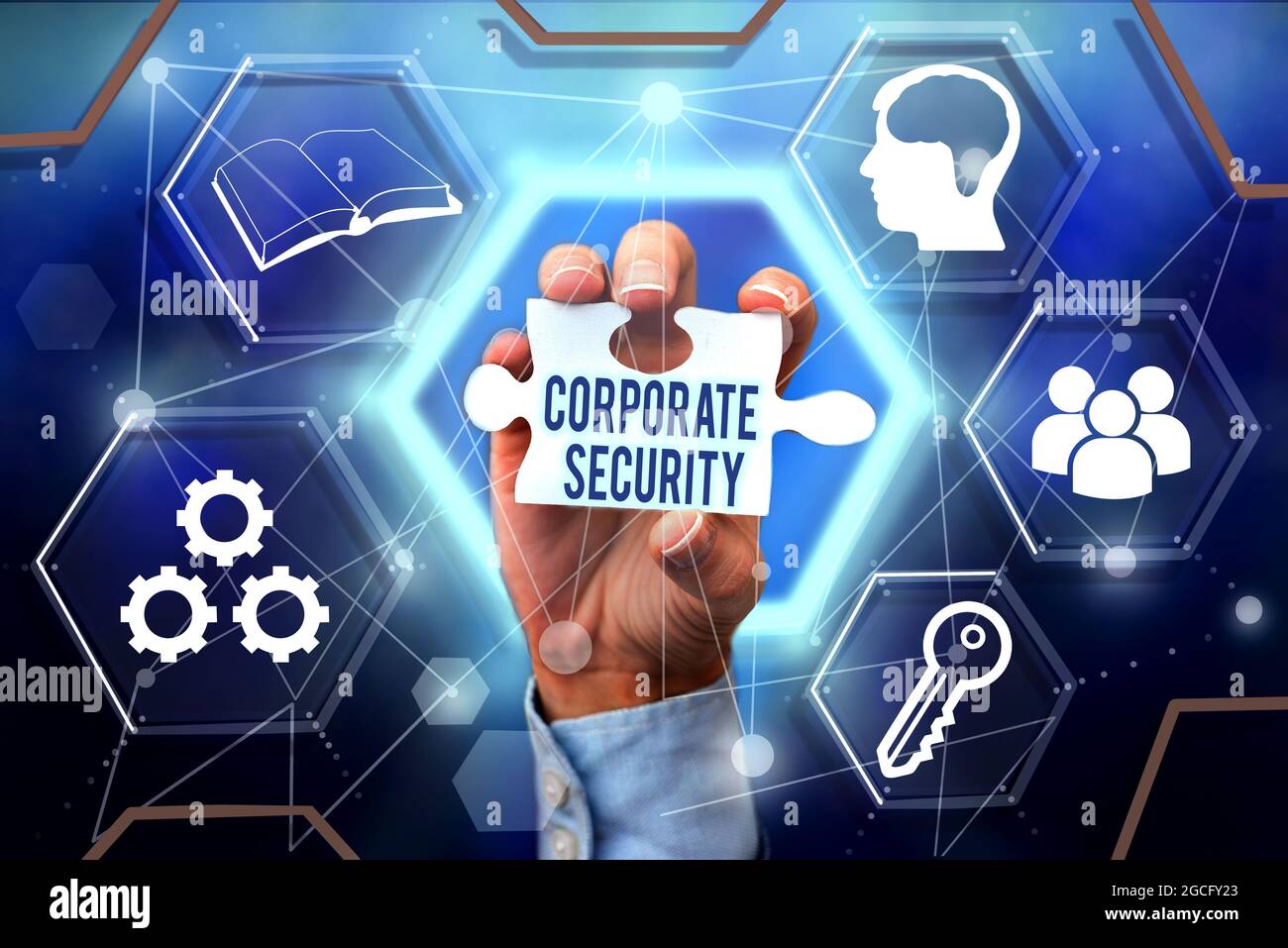From Cybersecurity to Physical Actions: Enhancing Corporate Security in a Transforming Globe
In today's quickly evolving electronic landscape, the significance of company safety and security can not be overemphasized. As cyber dangers become common and significantly advanced, companies should go past traditional cybersecurity procedures to safeguard their operations and assets - corporate security. This is where the combination of physical safety steps becomes crucial. By combining the toughness of both cybersecurity and physical safety, firms can create a detailed protection strategy that attends to the diverse series of hazards they face. In this discussion, we will certainly discover the transforming threat landscape, the requirement to integrate cybersecurity and physical protection, the execution of multi-factor verification measures, the significance of worker understanding and training, and the adjustment of protection actions for remote labor forces. By examining these key areas, we will acquire useful understandings right into exactly how organizations can enhance their business safety in an ever-changing globe.
Understanding the Changing Risk Landscape
The progressing nature of the modern world requires a thorough understanding of the transforming threat landscape for reliable business protection. In today's interconnected and digital age, risks to corporate safety have actually ended up being a lot more intricate and advanced. As innovation developments and businesses end up being significantly dependent on electronic facilities, the capacity for cyberattacks, data breaches, and various other protection violations has dramatically enhanced. It is essential for organizations to remain informed and adjust their security measures to resolve these developing threats.
One key aspect of understanding the transforming risk landscape is recognizing the different types of risks that companies deal with. Cybercriminals are frequently creating new strategies to manipulate vulnerabilities in computer systems and networks. These risks can vary from malware and ransomware attacks to phishing rip-offs and social engineering tactics. In addition, physical risks such as burglary, criminal damage, and company espionage continue to be widespread concerns for organizations.
Surveillance and assessing the threat landscape is important in order to recognize potential dangers and susceptabilities. This entails remaining updated on the current cybersecurity trends, assessing risk knowledge reports, and performing regular threat assessments. By understanding the altering threat landscape, organizations can proactively apply suitable safety actions to reduce dangers and shield their properties, credibility, and stakeholders.
Integrating Cybersecurity and Physical Safety
Incorporating cybersecurity and physical safety is essential for extensive corporate defense in today's digital and interconnected landscape. As organizations progressively count on innovation and interconnected systems, the limits in between physical and cyber hazards are coming to be obscured. To properly secure versus these dangers, an alternative approach that integrates both cybersecurity and physical safety measures is important.
Cybersecurity concentrates on shielding electronic properties, such as systems, networks, and data, from unauthorized access, interruption, and theft. Physical safety and security, on the other hand, encompasses procedures to safeguard physical possessions, people, and centers from vulnerabilities and threats. By integrating these two domains, organizations can attend to susceptabilities and dangers from both electronic and physical angles, therefore improving their general protection position.
The integration of these 2 disciplines permits for a much more detailed understanding of security risks and allows a unified feedback to cases. For example, physical access controls can be improved by integrating them with cybersecurity procedures, such as two-factor authentication or biometric identification. Cybersecurity steps can be matched by physical safety and security steps, such as surveillance cameras, alarm systems, and safe and secure gain access to points.

Carrying Out Multi-Factor Authentication Procedures
As companies progressively focus on comprehensive safety measures, one efficient strategy is the implementation of multi-factor authentication actions. Multi-factor authentication (MFA) is a safety approach that requires users to supply numerous kinds of identification to access a system or application. This method includes an added layer of defense by combining something the user understands, such as a password, with something they have, like a finger print or a protection token.
By executing MFA, organizations can substantially boost their security posture - corporate security. Conventional password-based authentication has its restrictions, as passwords can be quickly jeopardized or failed to remember. MFA alleviates these threats by including an added verification variable, making it extra hard for unapproved people to obtain accessibility to delicate details
There are a number of sorts of multi-factor authentication methods offered, including biometric verification, SMS-based confirmation codes, and equipment symbols. Organizations require to examine their certain requirements and select the most suitable MFA service for their needs.
Nonetheless, the execution of MFA must be very carefully prepared and executed. It is vital to strike an equilibrium between safety and security and usability to stop customer irritation and resistance. Organizations must likewise consider possible compatibility problems and provide ample training and assistance to guarantee a smooth change.
Enhancing Staff Member Understanding and Training
To strengthen company safety, organizations need to prioritize boosting worker recognition and training. In today's quickly evolving hazard landscape, workers play a crucial duty in protecting a company's sensitive details and possessions. Numerous protection breaches happen due Web Site to human mistake or lack of understanding. Therefore, organizations require to buy extensive training programs to enlighten their employees regarding possible risks and the very best techniques for reducing them.
Reliable employee awareness and training programs ought to cover a large range of subjects, consisting of information defense, phishing strikes, social design, password health, and physical security measures. These programs should be tailored to the specific needs and responsibilities of different employee roles within the special info company. Normal training simulations, workshops, and sessions can help staff members create the essential abilities and understanding to determine and respond to protection hazards successfully.
Moreover, companies must encourage a society of safety awareness and give continuous updates and reminders to maintain employees educated regarding the most up to date hazards and mitigation strategies. This can be done with internal interaction networks, such as newsletters, intranet portals, and e-mail campaigns. By cultivating a security-conscious labor force, companies can dramatically lower the probability of safety and security cases and shield their valuable properties from unauthorized gain access to or concession.

Adapting Safety And Security Procedures for Remote Labor Force
Adjusting corporate safety and security procedures to suit a remote labor force read review is essential in guaranteeing the security of delicate info and properties (corporate security). With the raising trend of remote work, organizations should execute proper safety actions to minimize the threats related to this brand-new way of working
One essential aspect of adapting security measures for remote work is developing safe and secure interaction networks. Encrypted messaging systems and online personal networks (VPNs) can assist safeguard sensitive information and prevent unapproved accessibility. In addition, organizations ought to impose using solid passwords and multi-factor verification to improve the safety and security of remote access.
Another vital factor to consider is the application of protected remote access remedies. This entails offering employees with protected accessibility to company resources and data via digital desktop framework (VDI), remote desktop computer procedures (RDP), or cloud-based solutions. These innovations ensure that delicate details remains safeguarded while allowing employees to execute their functions effectively.

Finally, thorough security awareness training is important for remote staff members. Educating sessions should cover best practices for safely accessing and managing delicate info, recognizing and reporting phishing efforts, and keeping the total cybersecurity health.
Conclusion
In conclusion, as the risk landscape proceeds to develop, it is essential for organizations to reinforce their safety determines both in the cyber and physical domains. Incorporating cybersecurity and physical safety and security, implementing multi-factor verification steps, and enhancing staff member understanding and training are essential actions towards attaining robust company safety.
In this discussion, we will certainly explore the transforming risk landscape, the demand to integrate cybersecurity and physical protection, the application of multi-factor verification procedures, the importance of worker awareness and training, and the adaptation of security steps for remote labor forces. Cybersecurity steps can be enhanced by physical security procedures, such as surveillance cams, alarm systems, and protected gain access to factors.
As organizations significantly focus on extensive safety measures, one efficient technique is the implementation of multi-factor authentication procedures.In verdict, as the threat landscape continues to progress, it is crucial for organizations to enhance their protection measures both in the cyber and physical domains. Integrating cybersecurity and physical safety, applying multi-factor verification measures, and enhancing worker understanding and training are crucial steps towards accomplishing durable corporate protection.